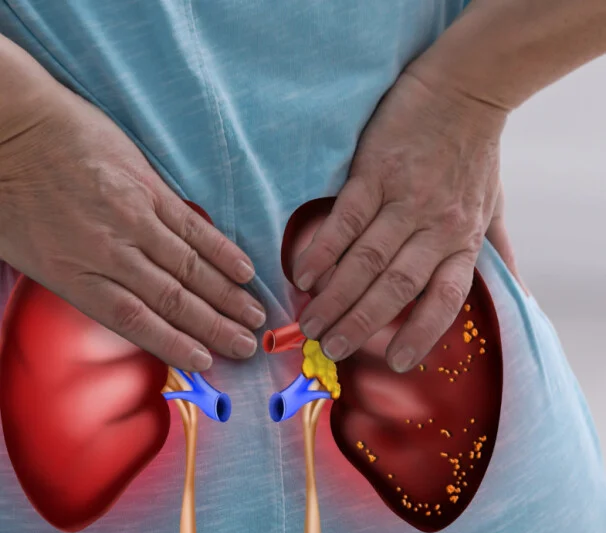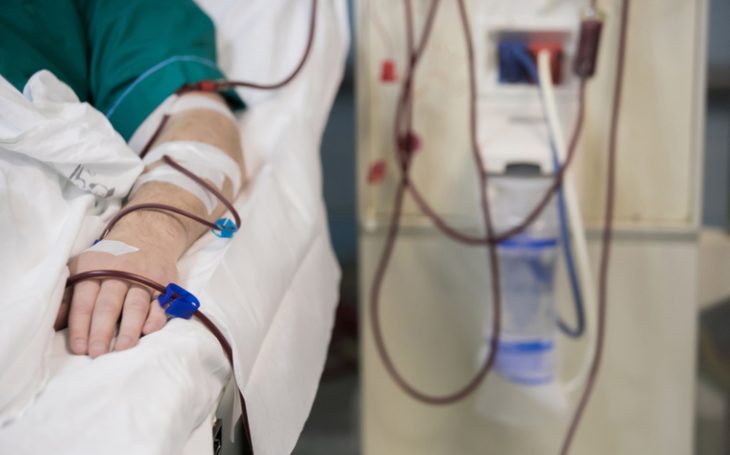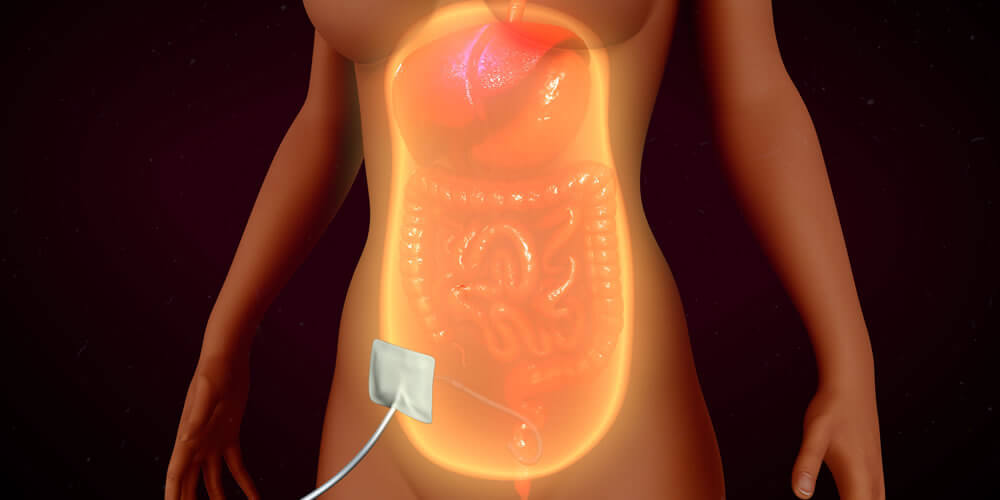Sou médica Nefrologista com foco em onconefrologia, especializada em doença renal crônica, lítíase renal e casos complexos. Atendo patologias relacionadas principalmente aos rins e suas complicações em pacientes oncológicos.
-
Onconefrologia
-
Doença Renal Crônica
-
Pedras nos Rins
-
Diálise Peritoneal
-
Nefrologia de Intervenção
-
Hipertensão Arterial Secundária
-
Casos Complexos

Dra. Germana Brito
CRM SP 127385 | RQE 32632
Sou médica Nefrologista e meu foco é Oncologia. Também sou mestre pela UNESP-Botucatu, doutora em Onconefrologia pelo AC Camargo Cancer Center, com residência médica em Nefrologia pela UNESP e graduação pela Universidade Estadual de Pernambuco.
Especialização internacional em Nefrologia de Intervenção no Porto - Portugal.
Coordenadora do Comitê de Onconefrologia da SBN e professora do curso de formação em Onconefrologia (Faculdade Sírius).
Nossos Tratamentos
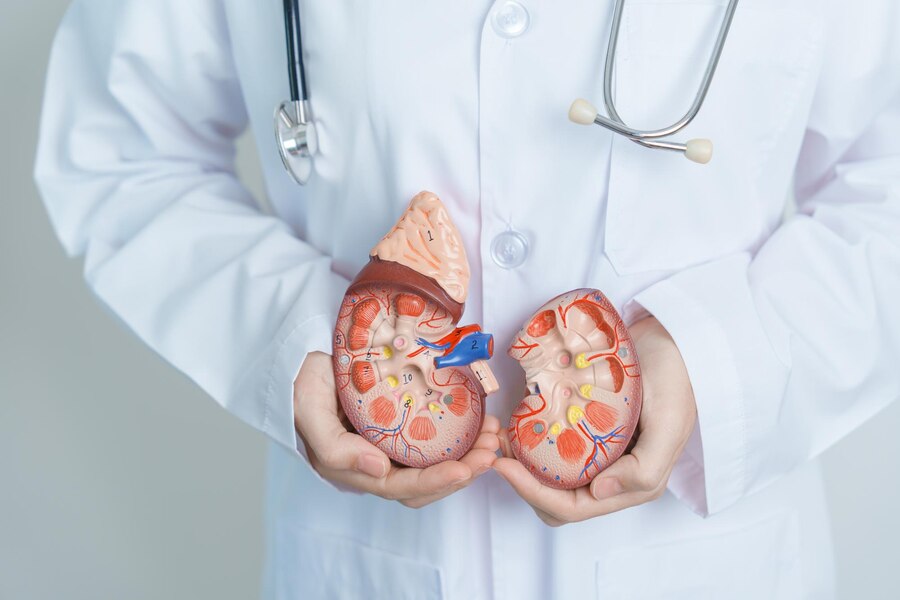
Onconefrologia
Tratamento especializado para pacientes com câncer e complicações renais, com abordagem multidisciplinar e acompanhamento personalizado durante todo o tratamento oncológico.
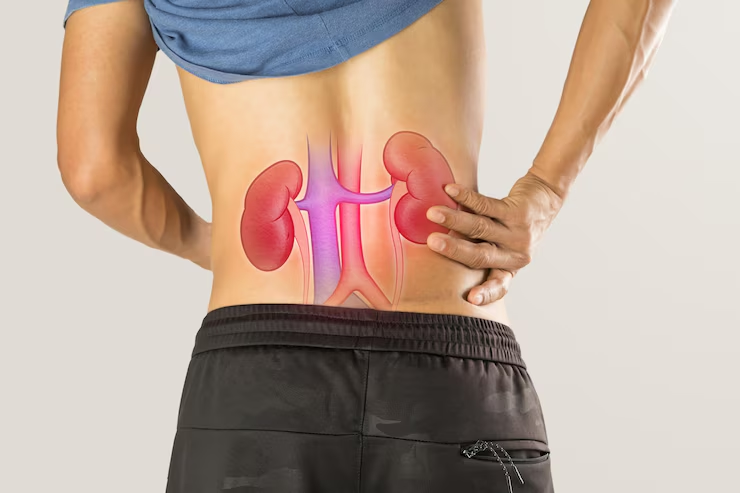
Doença Renal Crônica
Diagnóstico e acompanhamento da doença renal crônica, com foco na preservação da função renal e prevenção de complicações, oferecendo planos de tratamento personalizados.
Sintomas para procurar a Dra. Germana:

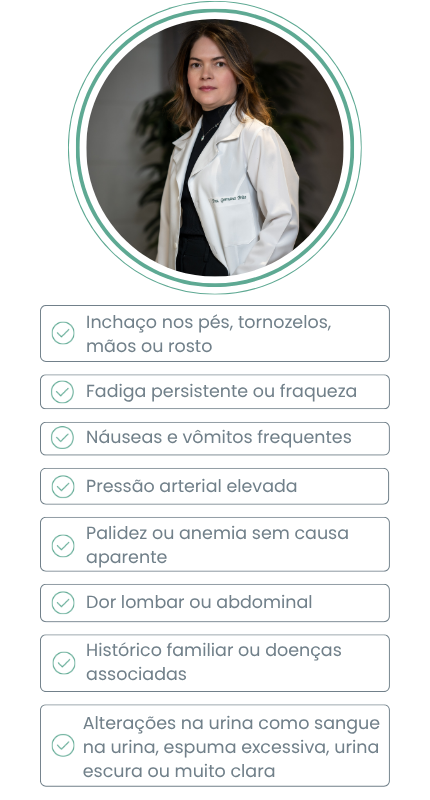
Atuação em números
com cuidado e excelência
em Nefrologia
- Mestre pela UNESP-Botucatu, doutora em Onconefrologia pelo AC Camargo Cancer Center
- Residência médica em Nefrologia pela UNESP e graduação pela Universidade Estadual de Pernambuco
- Especialização internacional em Nefrologia de Intervenção no Porto – Portugal
- Coordenadora do Comitê de Onconefrologia da SBN e professora do curso de formação em Onconefrologia (Faculdade Sírius)

Perda do funcionamento renal, tratamentos de doenças crônicas que podem afetar o rim, doença renal crônica, lítíase renal, nódulos e cistos renais são questões que afetam significativamente a qualidade de vida dos pacientes. Trabalho para identificar as causas desses problemas e oferecer soluções eficazes e personalizadas.
Condições tratadas pela Dra. Germana

Onconefrologia
Atendimento especializado para pacientes com câncer e complicações renais, oferecendo cuidado multidisciplinar durante todo o tratamento oncológico.

Doença Renal Crônica
Diagnóstico precoce e acompanhamento da doença renal crônica, com foco na preservação da função renal e prevenção de complicações.

Pedras nos Rins
Tratamento e prevenção de cálculos renais com abordagem personalizada para reduzir recidivas e preservar a função renal.

Nódulos e Cistos Renais
Investigação e acompanhamento de nódulos e cistos renais, com diagnóstico preciso e monitoramento especializado para cada caso.

Diálise Peritoneal
Acompanhamento completo em diálise peritoneal, oferecendo suporte técnico e emocional aos pacientes e suas famílias.

Hipertensão Arterial Secundária
Investigação e tratamento da hipertensão arterial de origem renal, com abordagem especializada para controle adequado da pressão arterial.

